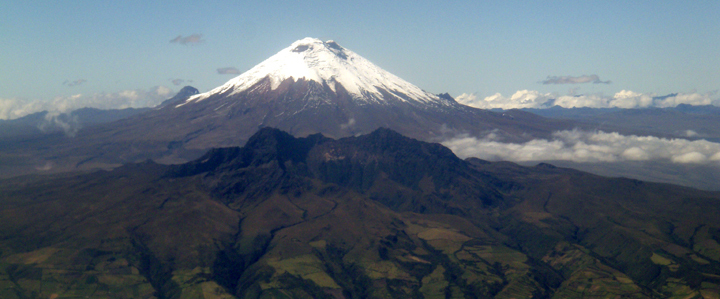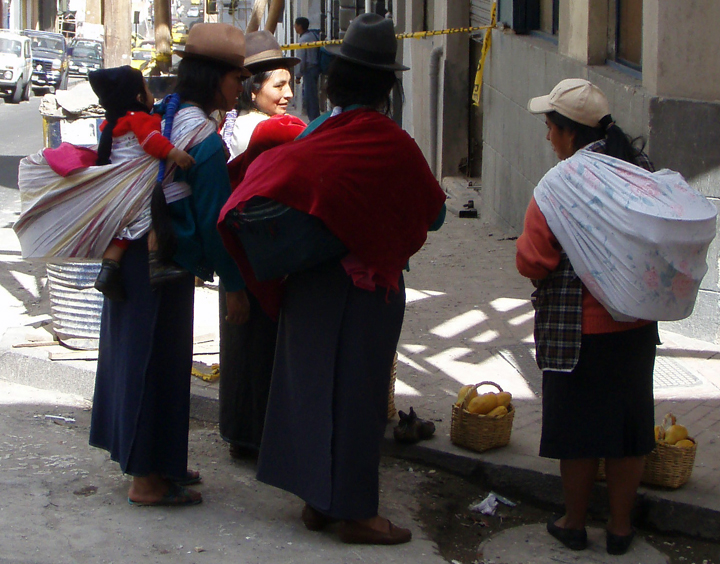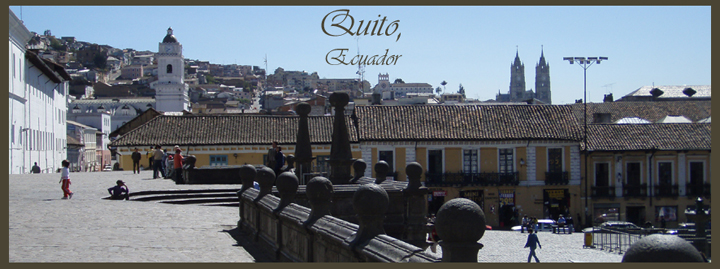|
Quito, the capital of Ecuador, at an elevation of 2 850 metres, is the second highest capital in the world (after La Paz, the administrative capital of Bolivia). Because of its elevation, the city enjoys moderate temperatures despite its location only 25 kilometres from the equator. With an estimated population of 2.1 million in 2007, Quito is Ecuador's second largest city after the port of Guayaquil.

Visible from the air as one approaches Quito, Cotopaxi, 75 kilometres
south of Quito, has one of the world's few equatorial glaciers.
Quito derives its name from the Quitu tribe who inhabited the site for thousands of years before being conquered by the Caras from the coastal Ecuador who established the Kingdom of Quito before they in turn were defeated by the Incas. The Incas destroyed the settlement at Quito before yielding it to the Spaniards in 1533.

Descendants of the ancient Quitu in the streets of modern Quito.
Francisco Pizarro established the settlement of San Francisco de Quito on August 15, 1534 and city's colonial heritage is evident in the architecture of the old city. There are also numerous monuments to Antonio Josť de Sucre who defeated Spanish forces at the Battle of Pichincha on May 24, 1822. This led to the independence of Quito and the surrounding areas and, ultimately, to the formation of the Republic of Ecuador with Quito as its capital in 1830.
Bibliography
"Ecuador." Standard Postage Stamp Catalogue. 1997.
Legault, Alain. Ecuador Galapagos Islands (Ulysses Travel Guide Series). Montreal: Ulysses, 2000.
"Quito." Wikipedia. 11 Mar. 2008. Wikimeida Foundation, Inc. 12 Mar. 2008 http://en.wikipedia.org/wiki/Quito.
Rachowiecki, Rob. Ecuador and the Galapagos Islands (a travel survival kit). Hawthorn, Victoria, Australia: Lonely Planet Publications, 1989.
More to See
See a Side Trip
The Galapagos Islands
© Grose Educational Media, 2008
| 


